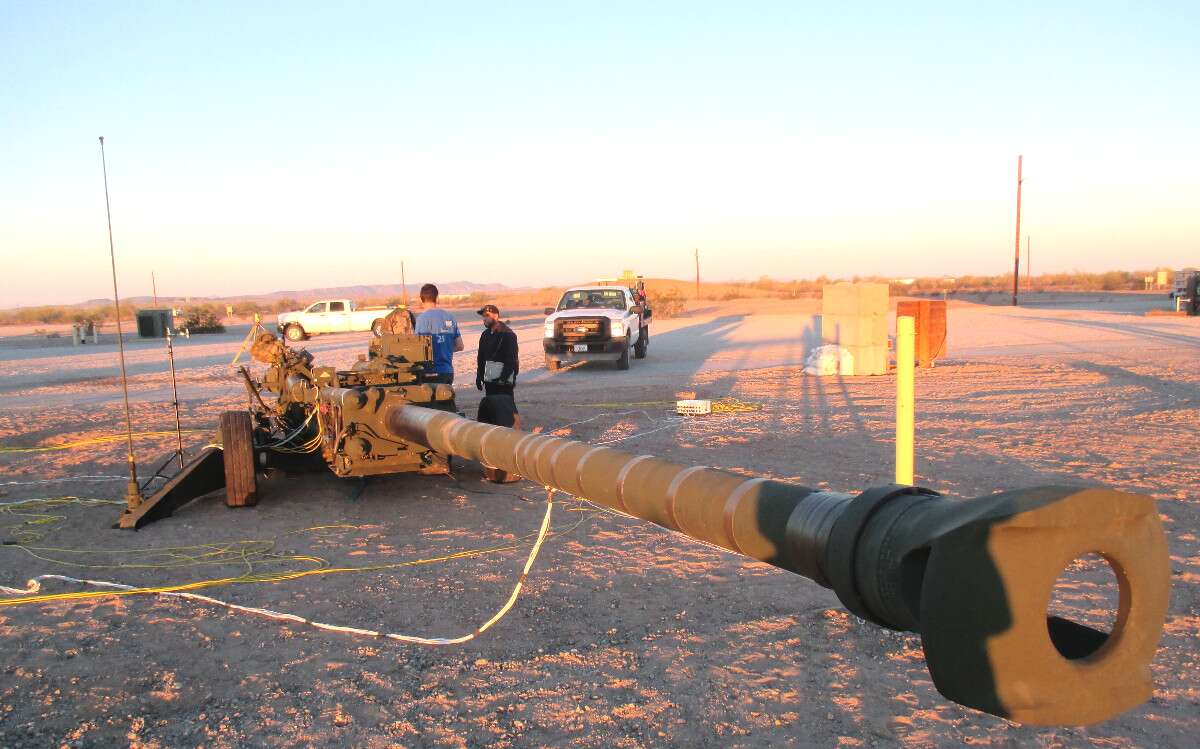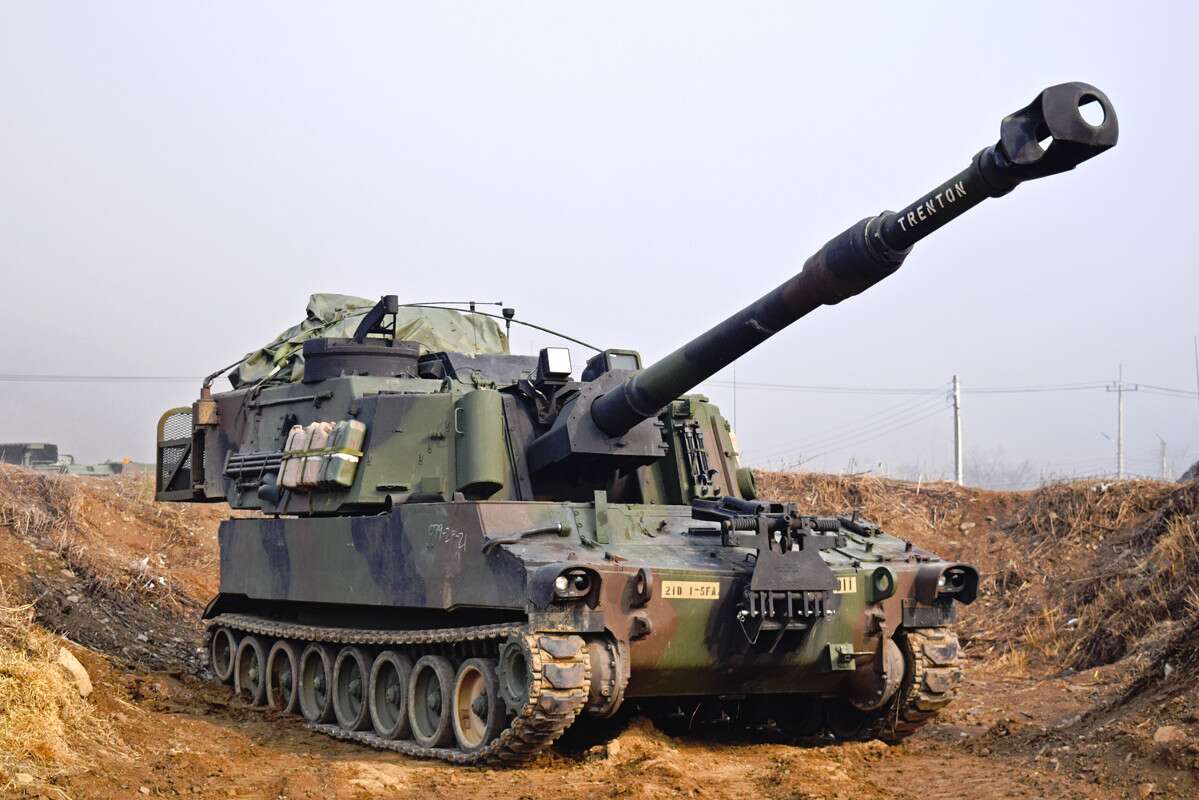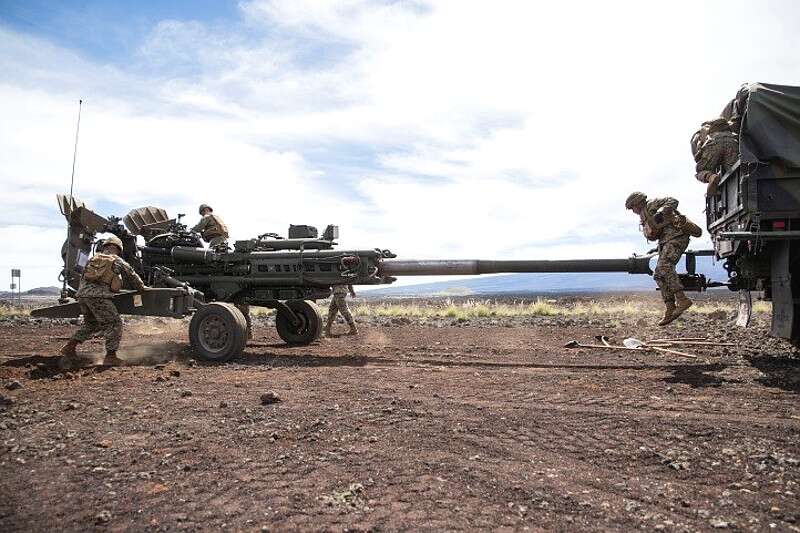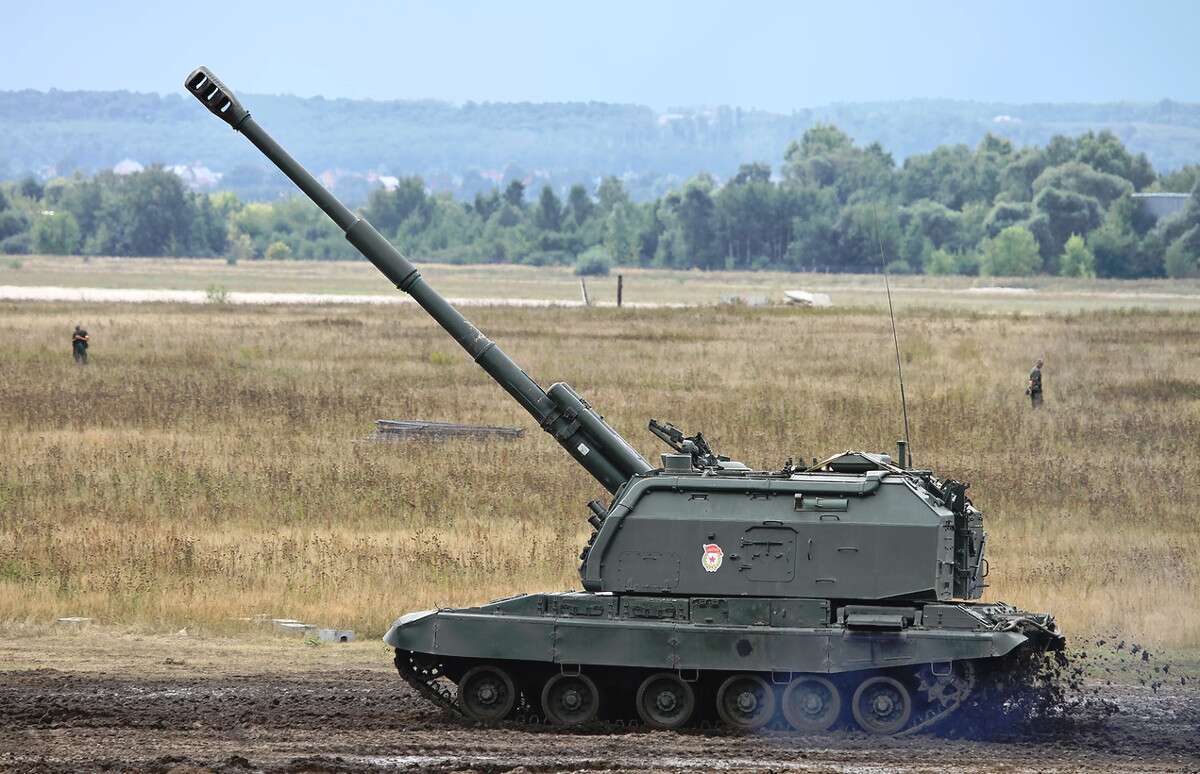As part of a broader effort to extend the range of its artillery units, the U.S. Army is working as fast as it can to finish development of a new, longer howitzer barrel that will more double the maximum range of both its towed and self-propelled 155mm guns. The service says that the upgraded weapons will be able to effectively fire new ramjet-powered shells, as well as employ improved rocket-assisted projectiles, both of which it sees as increasingly important weapons for defeating a near-peer opponent, such as Russia, in any potential high-end conflict.
According to a report by Warrior Maven earlier in June 2018, the Army has built new prototypes of the XM907 155mm cannon and recently conducted a mobility test of a modified M777A2 towed howitzer with the Yuma Proving Ground in Arizona. The service has been working on the project, which it refers to as the Extended Range Cannon Artillery (ECRA) program, since at least 2016.
“When you are talking about doubling the range you need a longer tube and a larger caliber,” an unnamed Army engineer involved in the ECRA project told Warrior Maven. “We are upgrading the breach and metallurgy of the tube, changing the hydraulics to handle increased pressure and using a new ram jet projectile – kind of like a rocket.”
The new cannon itself is 1,000 pounds heavier and six feet longer than the existing M205 on the M777A2 and will also be longer than the M284 cannon on the M109A6 and A7 self-propelled howitzers. The M284 has the same barrel length as the M205, but is heavier.
One of the prototype M777A2 howitzers with the new XM907 cannon.
The upgraded XM907 has a host of new improvements throughout, including the reinforced barrel and breach assemblies, and will feature a new muzzle break on the end of the barrel to better mitigate the shock and recoil from firing more powerful rounds. Norwegian defense contractor Nammo is already in the process of developing the XM1113 rocket-assisted projectile for the Army.
Howitzers with the new barrels should be able to fire these extended-range shells at targets more than 40 miles away. They’ll be able to lob existing types of ammunition further than before, as well.
A diagram showing the internal structure of the new XM1113 rocket-assisted 155mm projectile.
At present, M777s and M109s firing existing rocket-boosted rounds have a maximum range of fewer than 20 miles. The M982 Excalibur GPS-guided projectile is the longest-range option presently available, but can still only reach enemies approximately 25 miles away.
The addition of a ramjet-powered artillery shell could push the maximum range of these weapons out to more than 60 miles. The Army has yet to say what specific designs it might be looking at with regards to this type of ammunition, but has made it clear it is very interested in the concept.
Earlier in June 2018, Nammo unveiled a mockup of its 155mm Solid Fuel Ramjet projectile at the biennial Eurosatory arms expo in France. However, the company said that it had, so far, received “no set-in-stone firm requirement” for the shell from any possible customer.
https://youtube.com/watch?v=6J0XwLYmAc0%3Frel%3D0
In 2016, South Korean defense contractor Poongsan revealed its own ramjet artillery shell concept, which had an estimated range of approximately 50 miles. South Africa’s state-owned arms conglomerate Denel pitched yet another type to the Army in the early 2000s under the name ProRam, which could hit targets around 55 miles away.
Denel expected the unit price for ProRam to be less than $5000, which would be more expensive than conventional shells, but less pricey than guided artillery rounds. It lacked a guidance package of its own, though, and Nammo’s precision-guided type may turn out to be significantly more expensive.
Price will be an important factor in the development of any ramjet-powered shells since artillery units are often called upon to provide a significant volume of fire. If the rounds turn out to be overly expensive, the Army could decide it’s not a practical option for its upgraded howitzers. That being said, the service has already added the GPS-guided Excalibur to the mix of shells available to its units and each one of those costs close to $70,000, which is significantly more than ProRam’s estimated price point.
The new cannon barrels may also be better suited to firing hypersonic projectiles. The Army, in cooperation with the U.S. Navy, is looking at ammunition based on existing designs for its experimental railguns as another possible option to extend the range of existing howitzers.
There are potential pitfalls in the development of the extended-length cannon barrels themselves, too. The added weight changes the center of gravity of the lightweight M777 and the Army has had to add weights at various points to try and level things out.
It’s not clear whether this is an issue for the M109s, but at least early on in the ERCA program, the Army found artillery units had concerns about howitzers with the new barrels just falling over. “The visual prejudice we are up against is that it looks like it may tip over with all that extra cannon,” David Bound, the engineer leading the M777 upgrade effort at the Artillery Concepts and Design Branch of the service’s Armament Research, Development and Engineering Center, said in 2016.
An M109A6 self-propelled howitzer.
Another issue with the added length is how the barrel flexes and moves during normal movements and transport. If it bends too much and gets warped, it would throw off the weapon’s accuracy or make the howitzer dangerous to use at all.
This, again, has been a particularly pronounced issue for the M777. Unlike the Army’s previous towed howitzers, it hitches up to the truck pulling it via a ring on the muzzle break.
Adding six extra feet between the prime mover and the howitzers own two wheels only increases concerns about how much the barrel flexing as the vehicle goes driving down what may be bumpy or uneven roads and other pathways. The aforementioned mobility test at Yuma was almost certainly an attempt, at least in part, to determine how realistic these issues might be in practice.
This image of a US Marine Corps M777 hitched up to a truck gives a good sense of how much distance there is between the prime mover and the howitzer’s wheels on the existing version of the weapon during transit.
In addition, the extended overall length of the howitzers and the added weight will impact how they fit inside aircraft and ships, and how easy it is to sling load the M777 underneath helicopters. These could be particularly acute problems for the U.S. Marine Corps, which is also interested in acquiring the Army’s new barrel for its M777s.
But the added range that the combination of longer barrels and new rocket-assisted projectiles offers may help mitigate some of these concerns. And the benefits of adding ramjet-powered shells into the mix could easily be game-changing.
An artillery unit with howitzers able to hit targets between 45 and 60 miles away can cover a significantly greater target total area without ever having to relocate its guns. This would make the weapons more flexible in distributed and expeditionary operations and could limit the impact of it being more difficult to transport them.
It would also expand the possible locations where Army and Marine elements could establish firebases to begin with during expeditionary or distributed operations while still being in range of the units they’re tasked to support. This could be beneficial in both low- and high-end conflict scenarios where it could be necessary to quickly shift focus from supporting operations in one particular area to another. The need to provide fire missions across a wide front simultaneously or conduct operations far from established supply chains could also limit the overall resources available to start with.
The ability of artillery units to respond faster to fire support requests across greater distances would also give them even more capability to attack time-sensitive targets, including enemy mobile ballistic missiles or command and control nodes, before an opponent could relocate those assets or otherwise seek cover. It would similarly give forces on the ground additional options to quickly engage small groups of fighters or even specific individuals before they could flee the area.
The boost in range will also be essential to avoiding artillery counter-attacks from potential opponents, such as Russian troops armed with the new 2S33 Msta-SM2 152mm self-propelled howitzer. This weapon reportedly has a range of more than 25 miles and it could be even longer depending on whether it needs rocket-assisted ammunition to reach those target areas.
An older Russian 2S19 Msta-S self-propelled howitzer. The 2S33 is an improved version of this design.
According to Warrior Maven, the Army said that this threat was among the main reasons for fast-tracking the work on the new barrels and long-range ammunition. Many NATO members, as well as other U.S. allies and partners, have already adopted towed and self-propelled guns with longer barrels for the same reasons. For still largely unexplained reasons, the U.S. military has lagged behind in up-gunning its howitzers.
Longer-range artillery will be increasingly important in any future large-scale conflict against a near-peer opponent, though. China, among others, is also developing new cannon and rocket artillery systems, as well as conventionally-armed cruise and ballistic missiles with a clear eye toward limiting the ability for enemy forces to operate across wide swaths of the Pacific region, especially in the South China Sea, during a crisis.
“We’ve got to push the maximum range of all systems under development for close, deep and strategic, and we have got to outgun the enemy,” U.S. Army General Robert Brown, head of U.S. Army Pacific Command, said during a panel discussion at the Association of the U.S. Army’s Global Force Symposium in March 2018. “We don’t do that right now; it’s a huge gap. … We need cannons that fire as far as rockets today. We need rockets that fire as far as today’s missiles, and we need missiles out to 499 kilometers [approximately 310 miles].”
The new cannons for the Army’s 155mm howitzers are a key part of achieving those goals and the service definitely seems intent on getting the upgraded guns, and new ammunition to go along with them, into service as soon as possible.
Contact the author: [email protected]
Source: Read Full Article





